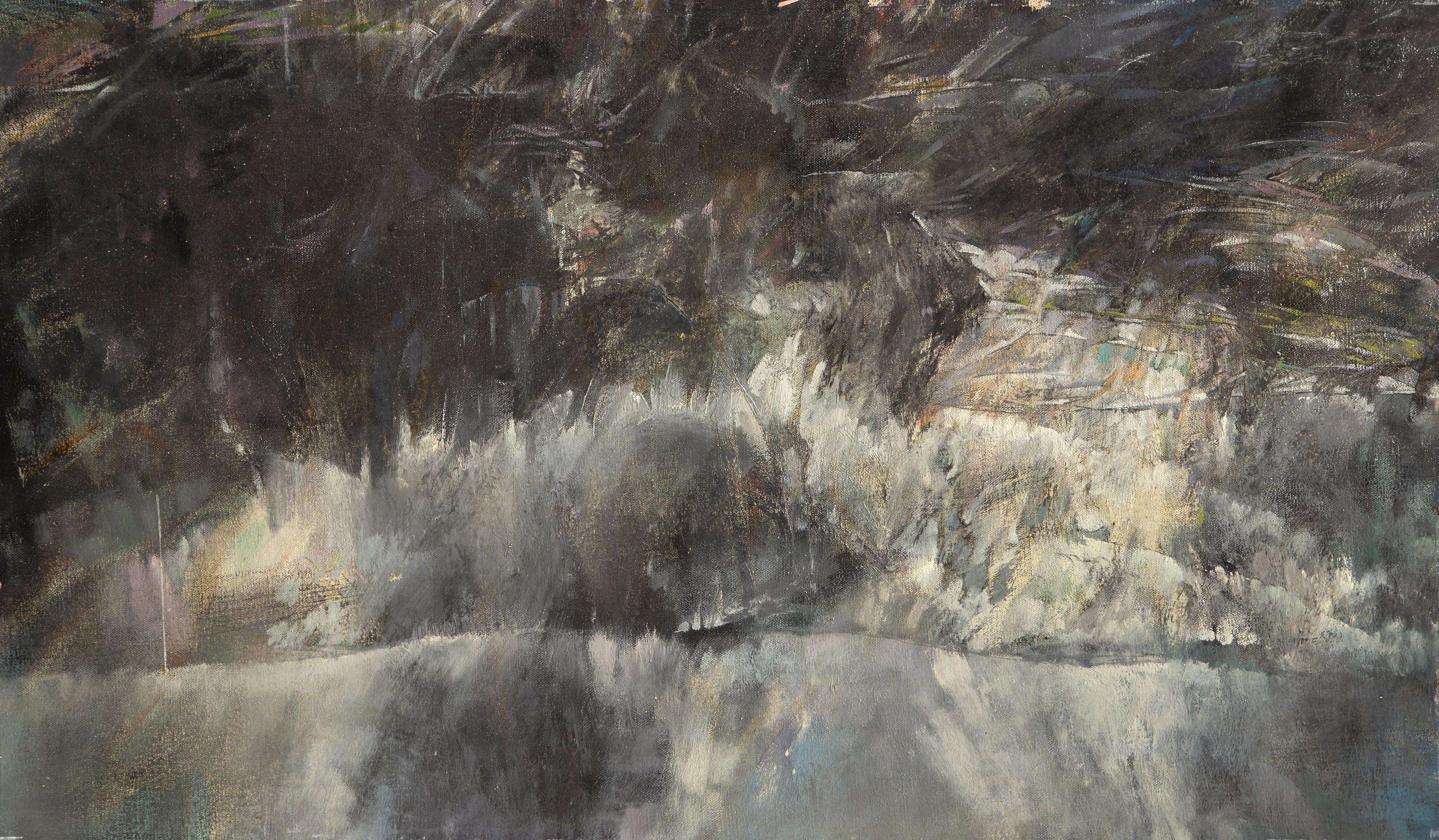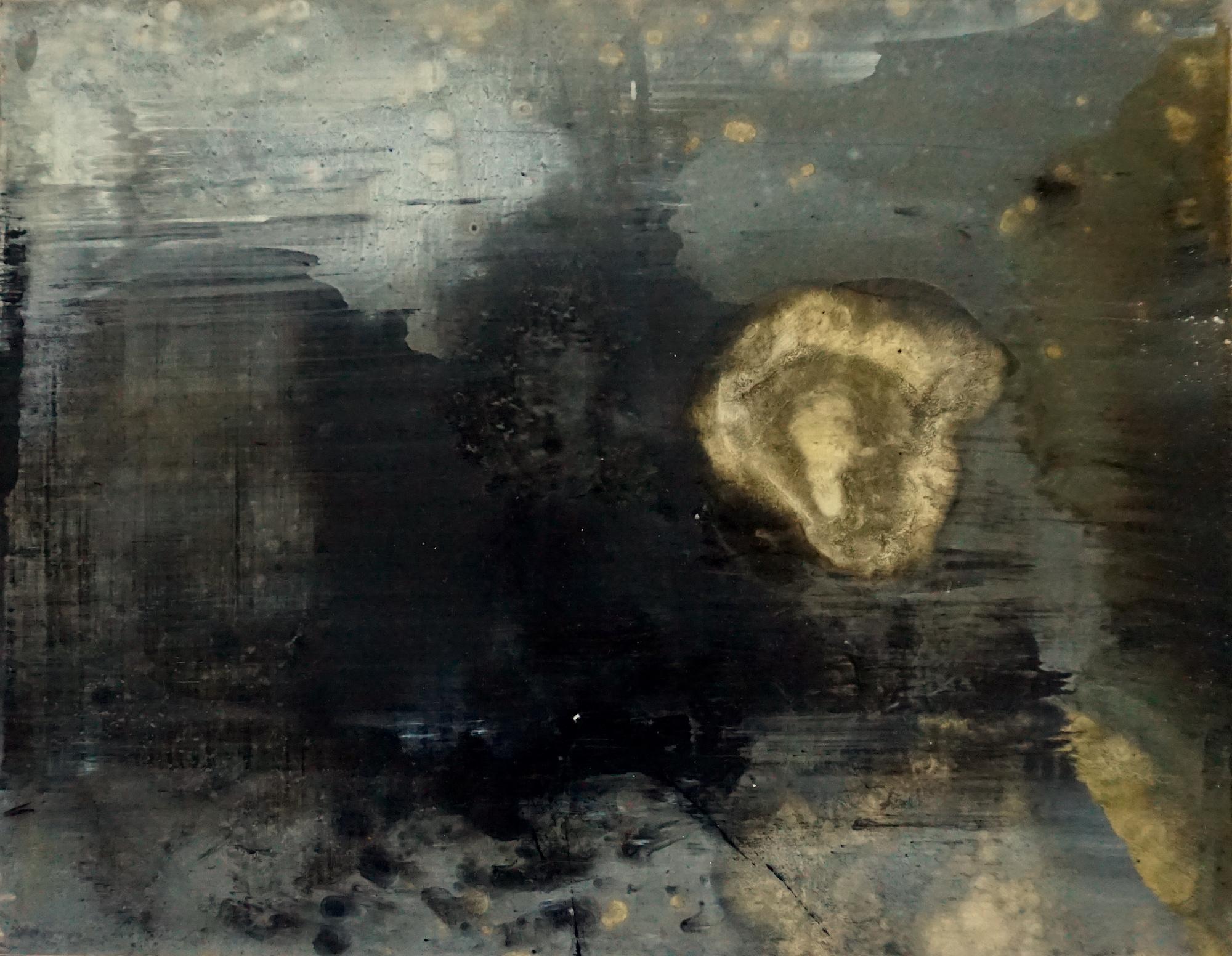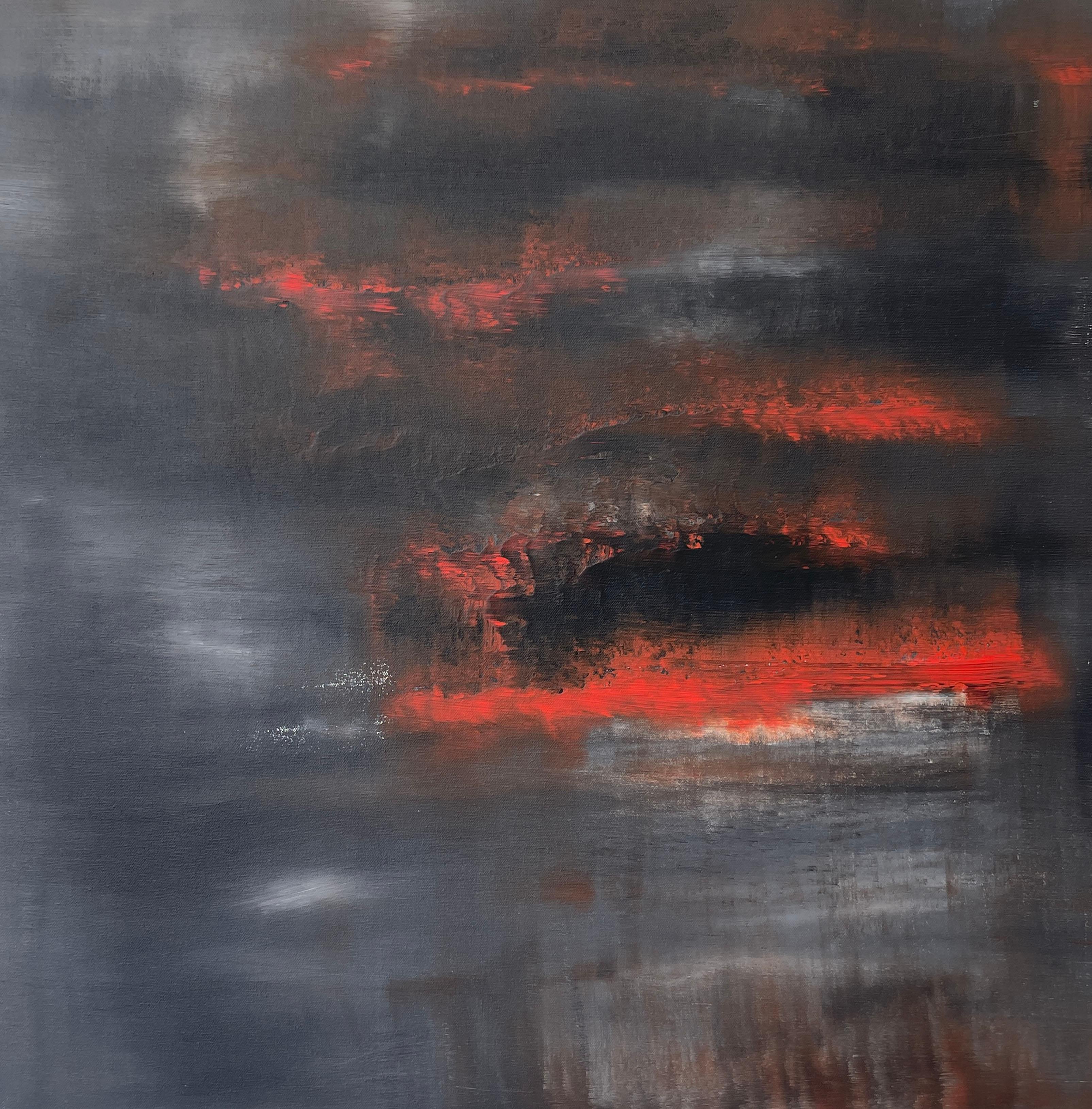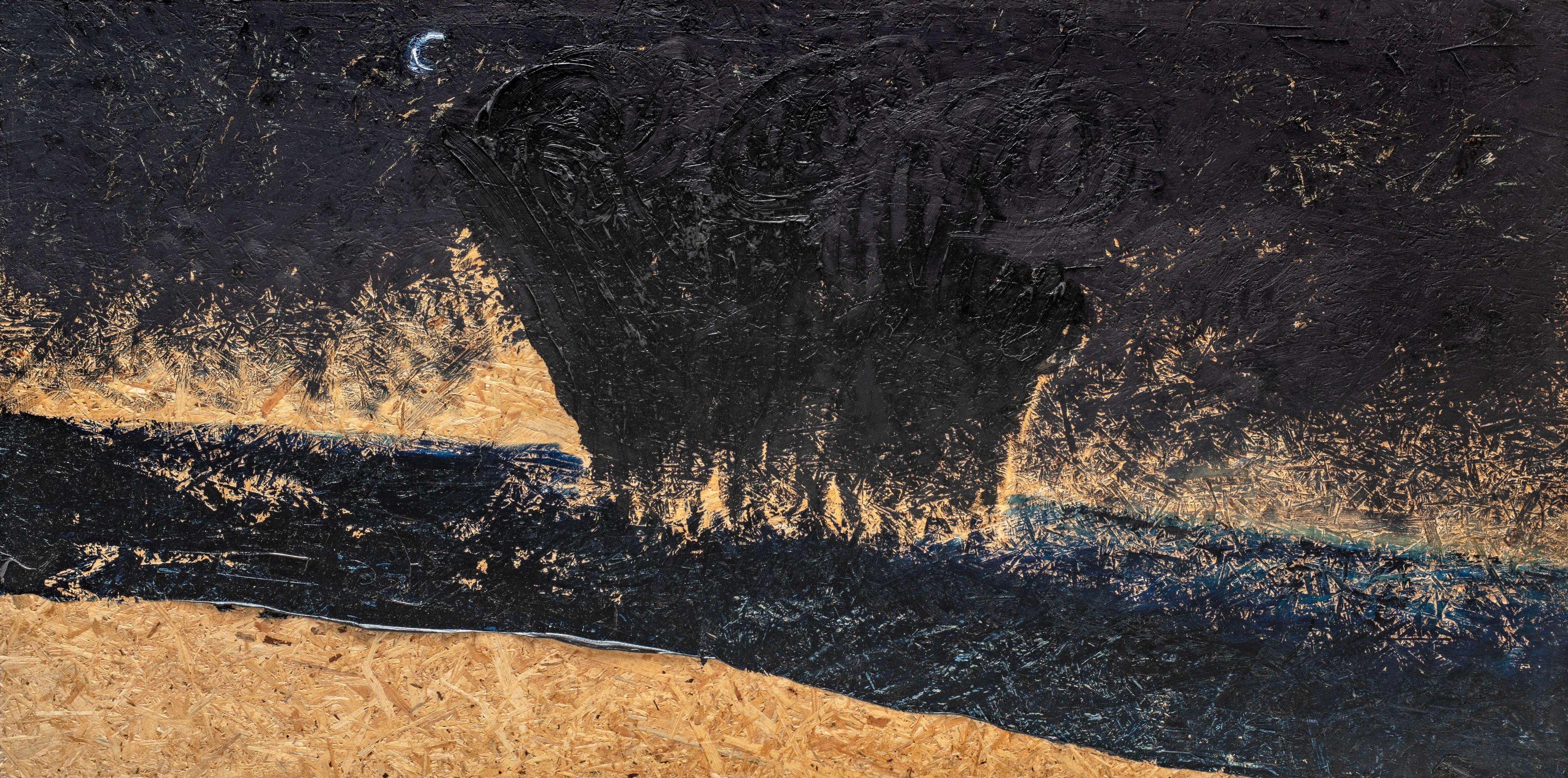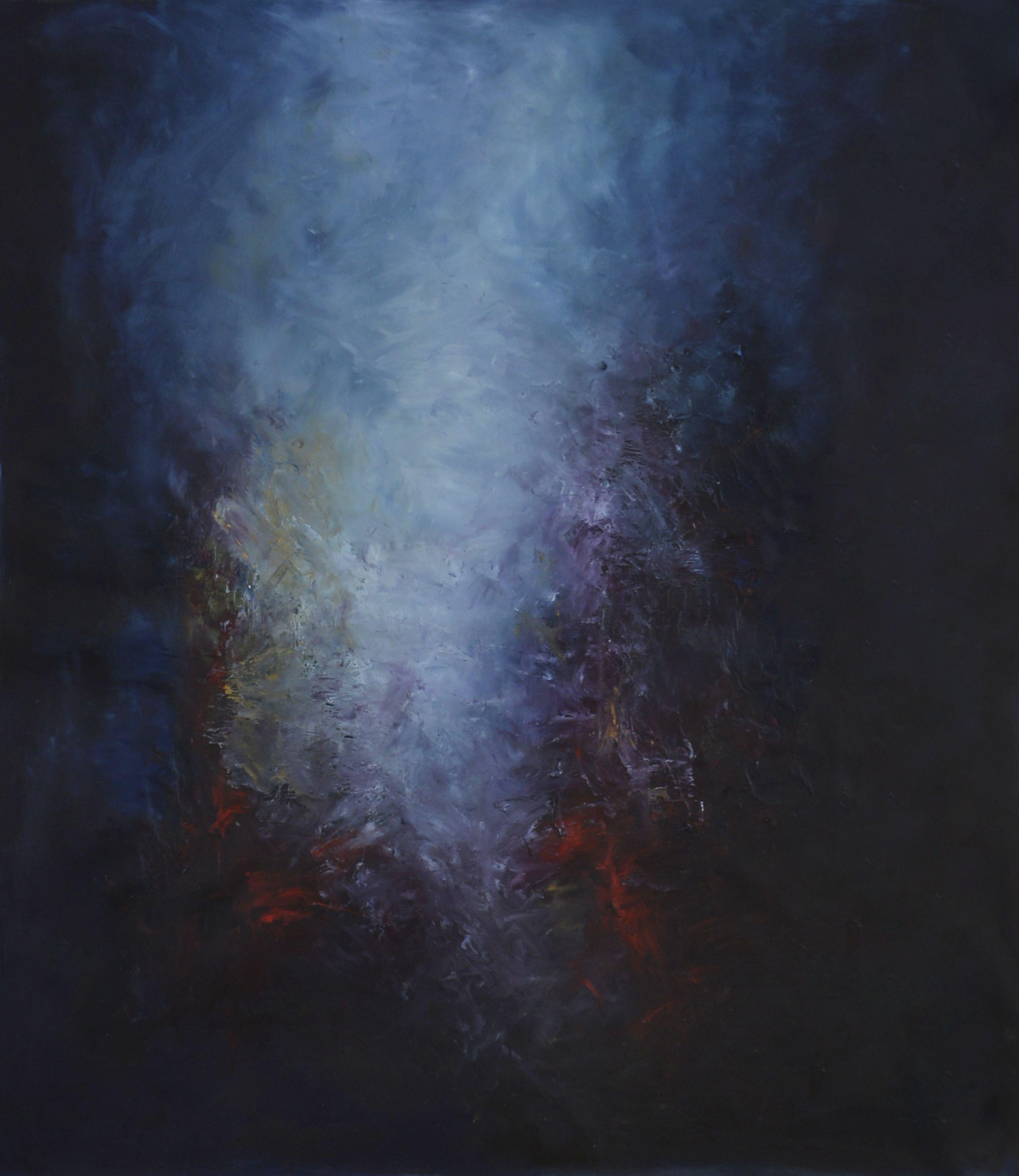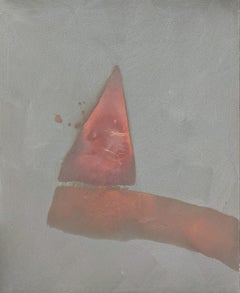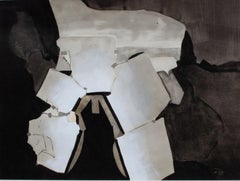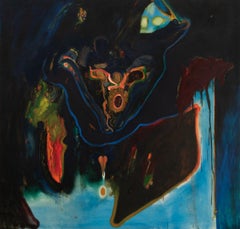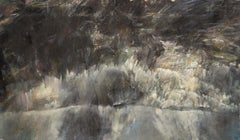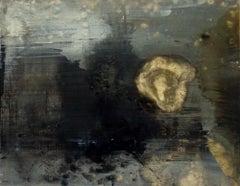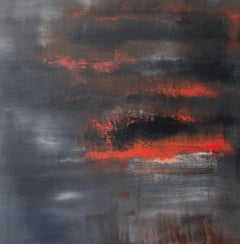Items Similar to "Pyroclastic Fever, " Nigel Cooke, Contemporary Painting, Lightning Skyscape
Want more images or videos?
Request additional images or videos from the seller
1 of 3
Nigel Cooke"Pyroclastic Fever, " Nigel Cooke, Contemporary Painting, Lightning Skyscape2002
2002
$32,000
$40,00020% Off
£24,165.12
£30,206.4020% Off
€27,666.84
€34,583.5520% Off
CA$45,192.36
CA$56,490.4620% Off
A$49,339.24
A$61,674.0620% Off
CHF 25,866.55
CHF 32,333.1820% Off
MX$599,244.12
MX$749,055.1620% Off
NOK 323,031.06
NOK 403,788.8320% Off
SEK 305,027.46
SEK 381,284.3220% Off
DKK 206,503.49
DKK 258,129.3620% Off
About the Item
Nigel Cooke (Born 1973)
Pyroclastic Fever, 2002
Oil on canvas
60 1/2 x 84 1/2 inches
Signed, titled and dated "NIGEL COOKE 'PYROCLASTIC FEVER' 2002 Nigel Cooke" on the overlap
Provenance:
Modern Art, London
Private Collection (acquired from the above in 2006)
Sotheby’s, New York, May 10, 2012, lot 497
Private Collection, Palm Beach
Joshua Kodner Auctions, Dania Beach, January 30, 2021, lot 70
Private Collection
Nigel Cooke is known for evocative works that merge figurative forms with abstract and elemental atmospherics.
Since the late 1990s, Cooke has explored and stretched the boundaries of figurative painting, creating a highly diverse and distinctive body of work. More recently, his work has assessed this output, moving into a succinct language with which to investigate his wide range of interests.
Informed by a range of fields from palae-ontology, neuroscience, classical mythology and zoology, the linear construction of Cooke’s latest paintings recalls brain circuitry, the human or animal body and landscape formations simultaneously.
The artist is interested in folding familiar dualities such as the mind and body, or the human brain and the natural world, into a single fluid gesture. His organic abstractions are loaded with mammalian and geological fragments, creating an instability and movement in the image as well as an ambiguity between a vast array of natural associations.
Using notational sketches and paintings made on location at various sites around the world, Cooke distills his impressions of specific places and the people in them into a personal vocabulary of forms that evolves and repeats through time, with autobiographical material often infusing and directing the process. Developing an emotive and highly focused use of colour alongside these forms, Cooke’s calligraphic images are delicately balanced, with structure and collapse held together in a state of tension.
The paintings contrast staining techniques on raw linen with classical techniques of layering and spatial depth, indebted to both abstract expressionism and the figurative compositions of European Classicism. Much of the work’s rehearsals and revisions are visible in the final image, which play fine, schematic areas against passages of gestural impasto.
Cooke’s background in masterfully executed figurative painting provides the sense of drawing and representational rendering that permeate the abstract marks. In their unfixed and writhing otherness, they engage with the self as a porous system, in flux between animal states and prehistory, between the inner life and the ecosystems of the world at large.
Nigel Cooke studied at the Royal College of Art and Goldsmiths College, where he gained a PhD in Philosophy, writing about non-linear systems in the thought of George Bataille, Michel Serres and others. Making often atypical connections between disparate fields - cave paintings and surrealism, insect mimicry and information physics - his theoretical writings ultimately explored representation as a function of the natural world, and formed the basis of his conception of the value of painting and its possibilities.
His paintings are held in several of the world’s major public collections, including the Museum of Modern Art, New York; Tate Gallery, London; Solomon R. Guggenheim Museum, New York; Hammer Museum, Los Angeles; Astrup Fearnely Museet for Moderne Kunst, Oslo; Milwaukee Art Museum.
- Creator:Nigel Cooke (1973, British)
- Creation Year:2002
- Dimensions:Height: 60.5 in (153.67 cm)Width: 84.5 in (214.63 cm)
- Medium:
- Movement & Style:
- Period:
- Condition:
- Gallery Location:New York, NY
- Reference Number:1stDibs: LU1841210320452
About the Seller
5.0
Platinum Seller
Premium sellers with a 4.7+ rating and 24-hour response times
Established in 2022
1stDibs seller since 2022
122 sales on 1stDibs
Typical response time: <1 hour
- ShippingRetrieving quote...Shipping from: New York, NY
- Return Policy
Authenticity Guarantee
In the unlikely event there’s an issue with an item’s authenticity, contact us within 1 year for a full refund. DetailsMoney-Back Guarantee
If your item is not as described, is damaged in transit, or does not arrive, contact us within 7 days for a full refund. Details24-Hour Cancellation
You have a 24-hour grace period in which to reconsider your purchase, with no questions asked.Vetted Professional Sellers
Our world-class sellers must adhere to strict standards for service and quality, maintaining the integrity of our listings.Price-Match Guarantee
If you find that a seller listed the same item for a lower price elsewhere, we’ll match it.Trusted Global Delivery
Our best-in-class carrier network provides specialized shipping options worldwide, including custom delivery.More From This Seller
View All"Untitled, " Daniel Lergon, German Contemporary Abstract Painting
Located in New York, NY
Daniel Lergon (German, b. 1978)
Untitled, 2012
Oil on canvas
47 1/2 x 39 1/2 inches
Signed and dated on the reverse
Provenance:
Galerie Christian Lether...
Category
2010s Contemporary Abstract Paintings
Materials
Canvas, Oil
"Cronus View from the Cave" David Hare, Abstract Surrealist Composition
By David Hare
Located in New York, NY
David Hare
Cronus View from the Cave, 1971
Graphite, Ink wash, Paper Collage on Paper on Board
25 x 33 inches
“Freedom is what we want,” David Hare boldly stated in 1965, but then he added the caveat, “and what we are most afraid of.” No one could accuse David Hare of possessing such fear. Blithely unconcerned with the critics’ judgments, Hare flitted through most of the major art developments of the mid-twentieth century in the United States. He changed mediums several times; just when his fame as a sculptor had reached its apogee about 1960, he switched over to painting. Yet he remained attached to surrealism long after it had fallen out of official favor. “I can’t change what I do in order to fit what would make me popular,” he said. “Not because of moral reasons, but just because I can’t do it; I’m not interested in it.”
Hare was born in New York City in 1917; his family was both wealthy and familiar with the world of modern art. Meredith (1870-1932), his father, was a prominent corporate attorney. His mother, Elizabeth Sage Goodwin (1878-1948) was an art collector, a financial backer of the 1913 Armory Show, and a friend of artists such as Constantin Brancusi, Walt Kuhn, and Marcel Duchamp.
In the 1920s, the entire family moved to Santa Fe, New Mexico and later to Colorado Springs, in the hope that the change in altitude and climate would help to heal Meredith’s tuberculosis. In Colorado Springs, Elizabeth founded the Fountain Valley School where David attended high school after his father died in 1932. In the western United States, Hare developed a fascination for kachina dolls and other aspects of Native American culture that would become a recurring source of inspiration in his career.
After high school, Hare briefly attended Bard College (1936-37) in Annandale-on-Hudson. At a loss as to what to do next, he parlayed his mother’s contacts into opening a commercial photography studio and began dabbling in color photography, still a rarity at the time [Kodachrome was introduced in 1935]. At age 22, Hare had his first solo exhibition at Walker Gallery in New York City; his 30 color photographs included one of President Franklin Roosevelt.
As a photographer, Hare experimented with an automatist technique called “heatage” (or “melted negatives”) in which he heated the negative in order to distort the image. Hare described them as “antagonisms of matter.” The final products were usually abstractions tending towards surrealism and similar to processes used by Man Ray, Raoul Ubac, and Wolfgang Paalen.
In 1940, Hare moved to Roxbury, CT, where he fraternized with neighboring artists such as Alexander Calder and Arshile Gorky, as well as Yves Tanguy who was married to Hare’s cousin Kay Sage, and the art dealer Julian Levy. The same year, Hare received a commission from the American Museum of Natural History to document the Pueblo Indians. He traveled to Santa Fe and, for several months, he took portrait photographs of members of the Hopi, Navajo, and Zuni tribes that were published in book form in 1941.
World War II turned Hare’s life upside down. He became a conduit in the exchange of artistic and intellectual ideas between U.S. artists and the surrealist émigrés fleeing Europe. In 1942, Hare befriended Andre Breton, the principal theorist of surrealism. When Breton wanted to publish a magazine to promote the movement in the United States, he could not serve as an editor because he was a foreign national. Instead, Breton selected Hare to edit the journal, entitled VVV [shorth for “Victory, Victory, Victory”], which ran for four issues (the second and third issues were printed as a single volume) from June 1942 to February 1944. Each edition of VVV focused on “poetry, plastic arts, anthropology, sociology, (and) psychology,” and was extensively illustrated by surrealist artists including Giorgio de Chirico, Roberto Matta, and Yves Tanguy; Max Ernst and Marcel Duchamp served as editorial advisors.
At the suggestion of Jacqueline Lamba...
Category
1970s Abstract Abstract Paintings
Materials
Paper, Ink, Graphite
"Untitled, 56-21" Stephen Pace, Pulsating Forms, Abstract Expressionist Painting
By Stephen Pace
Located in New York, NY
Stephen Pace
Untitled, 56-21, 1956
Signed and dated lower right
Oil on canvas
22 x 30 inches
Born in Charleston, Missouri, Stephen Pace grew up in Indiana, where his parents operat...
Category
1950s Abstract Expressionist Abstract Paintings
Materials
Canvas, Oil
"Untitled" William Scharf, Abstract Expressionist, New York School
By William Scharf
Located in New York, NY
William Scharf
Untitled, 1962
Signed lower left; signed and dated verso
Oil on canvas
48 x 50 inches
A visionary painter with ties to the avant-garde artistic community in New York at midcentury, William Scharf nevertheless defies art historical categorization. His abstracted compositions of organic and geometric formal elements recall the free associations of Surrealism and the all-over grandeur of Abstract Expressionism, and at the same time embody a very individual and immediately recognizable pictorial sense. Scharf combines virtuoso paint handling, vibrant color, and rich symbolic language in canvases that engage the viewer in a transcendent and emotional dialogue. This dialogue is accomplished in part through recurring symbols, which allude to hidden, mysterious narratives. Scharf plumbs the psychological wells of collective myths for symbolic content: the crown of thorns, the ladder, the fish, and the cross can be found throughout, functioning not, as one might expect, as religious symbols, but rather as a means through which to access a deeper, symbolic level of visual communication.
Born in 1927 in Media, Pennsylvania, an early friendship with renowned artist N.C. Wyeth encouraged Scharf’s artistic efforts from a very young age. After a time with the Army Air Corps in the mid-1940s, Scharf formalized his art studies at the Pennsylvania Academy of the Fine Arts under Franklin Watkins...
Category
1960s Abstract Abstract Paintings
Materials
Canvas, Oil
"Twilight Imagery" Lynne Drexler, 1976 Abstract Dark Chromatic Composition
By Lynne Drexler
Located in New York, NY
Lynne Drexler
Twilight Imagery, 1976
Signed and dated on the reverse
Oil on canvas
30 1/2 x 22 1/2 inches
Southern-born Lynne Mapp Drexler found her ar...
Category
1970s Abstract Expressionist Abstract Paintings
Materials
Canvas, Oil
"Untitled, " William Baziotes, Black Modern Abstract Expressionism, Surrealism
By William Baziotes
Located in New York, NY
William Baziotes (1912 - 1963)
Untitled, circa 1935-1940
Oil on board
14 x 19 3/4 inches
Illegible Inscription present to the verso
Provenance:
Previously from the estate of Consta...
Category
1930s Abstract Expressionist Abstract Paintings
Materials
Oil, Board
You May Also Like
Storm Clouds, Abstract Expressionist Oil Painting by Daniel Newman
Located in Long Island City, NY
Daniel Newman, American (1927 - 1994) - Storm Clouds, Year: 1960, Medium: Oil on board, signed and dated on verso, Size: 20 x 34 in. (50.8 x 86.36 cm)
Category
1960s Abstract Expressionist Abstract Paintings
Materials
Oil
American Abstract Contemporary Art by Paul Lorenz - January 09, No. 3
By Paul Lorenz
Located in Paris, IDF
Oil, casein & ink on panel
Paul Lorenz is an American artist born in 1961 who lives & works in Buckeye, AZ, USA. With an education in Bauhaus architecture, fine art, and music compo...
Category
2010s Abstract Abstract Paintings
Materials
Ink, Oil, Casein, Panel
Volcanic, Large Abstract Painting by Richard Weston
By Richard Weston
Located in Long Island City, NY
Artist: Richard Weston, American XXth
Title: Volcanic
Year: circa 1980
Medium: Acrylic on Canvas, signed l.r.
Size: 48 x 60 in. (121.92 x 152.4 cm)
Category
1980s Abstract Abstract Paintings
Materials
Canvas, Acrylic
Lava Storm- acrylic on canvas
Located in West Hollywood, CA
Nina is an artist, ceramist and colorist with 20 years of professional experience and a lifetime of art appreciation. Originally from Virginia and having traveled and lived extensive...
Category
2010s Abstract Abstract Paintings
Materials
Canvas, Acrylic
Rising Nicolas Kennett 21st Century Bristish painting landscape sea dark sky
Located in Paris, FR
Oil paint on wood panel
Signed on the back
"Incanto" or the enchantment of shifting
"Nicolas Kennett revisits the organic world through painted and s...
Category
2010s Contemporary Figurative Paintings
Materials
Oil, Wood Panel
Source, Painting, Oil on Canvas
By Robert van Bolderick
Located in Yardley, PA
Abstract oil painting on canvas :: Painting :: Abstract Expressionism :: This piece comes with an official certificate of authenticity signed by the artist :: Ready to Hang: Yes :: S...
Category
2010s Abstract Expressionist Paintings
Materials
Oil
More Ways To Browse
Cave Painting
Skyscapes Art
Insect Painting
Hard Edge Painting
Painting On Glass
Woman Abstract Art
Horizon Painting
Bright Contemporary Art
Abstract Expressionism Mid Century Painting
Window Art Painting
Abstract Paintings On Linen
John Love
Fabric Collage
Hungarian Artists
Alex Gray
Blue John
Monochrome Painting
Simple Painting
